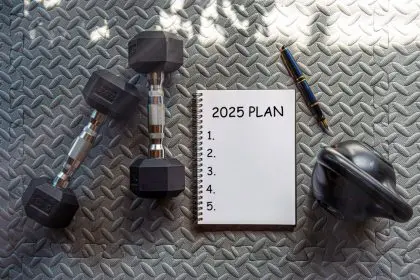Aging brings many changes to our bodies, some more perplexing than others. One such change that often leaves people scratching their heads is the growth of hair in unexpected places — like our ears. While it may seem peculiar, the reasons behind this phenomenon are rooted in biology and genetics. In this article, we will explore why hair grows on our ears as we age, the factors contributing to this change and potential solutions for those who find it bothersome.
Understanding hair growth
To comprehend why we grow hair on our ears as we age, it’s essential first to understand the basics of hair growth. Hair grows from follicles located in the dermis, the middle layer of our skin. These follicles produce hair through a process known as keratinization, where cells produce keratin, a protein that makes up hair, skin and nails. Hair growth is influenced by various factors, including genetics, hormones and age.
The role of hormones
Hormones play a significant role in hair growth throughout our lives. Androgens, a group of hormones that includes testosterone, are particularly influential. During puberty, androgens cause hair growth in areas such as the face, armpits and pubic region. However, as we age, these hormones can also lead to hair growth in less desirable places, like our ears.
Changes in hormone levels
As men age, their testosterone levels gradually decrease. Despite this decline, the sensitivity of hair follicles to androgens can increase. This heightened sensitivity means that even lower levels of testosterone can stimulate hair growth in areas where it previously did not occur, such as the ears and nose. Women also experience hormonal changes with age, particularly during menopause, when estrogen levels drop. This hormonal shift can lead to an increase in androgens, potentially causing similar hair growth patterns.
Genetic predisposition
Genetics play a crucial role in determining where and how much hair we grow. If your parents or grandparents had significant ear hair, you are more likely to experience it as well. This genetic predisposition can influence the number of hair follicles in the ear area and their responsiveness to hormonal changes.
The purpose of ear hair
While ear hair may seem unnecessary and purely aesthetic, it does serve a functional purpose. Ear hair helps protect the ear canal from dust, debris and small insects. It acts as a barrier, preventing foreign particles from entering the ear and potentially causing infections or damage. As we age, the body’s need for protective mechanisms increases, which may explain why ear hair becomes more prominent.
Common myths and misconceptions
There are several myths and misconceptions about ear hair growth that are worth addressing. One common myth is that shaving or plucking ear hair will cause it to grow back thicker and faster. This is not true; hair growth is determined by the hair follicle’s characteristics, not by how it is removed. Another misconception is that ear hair growth is a sign of poor hygiene. In reality, it is a natural part of the aging process and has no direct correlation with cleanliness.
Managing ear hair growth
For those who find ear hair growth bothersome, there are several methods to manage it. Trimming with scissors or using electric trimmers designed for ear hair are common and effective methods. These tools are specifically designed to safely trim ear hair without causing injury. Waxing and plucking are also options, but they can be more painful and may cause irritation or infection if not done correctly.
Medical treatments and solutions
In addition to at-home methods, there are medical treatments available for managing unwanted hair growth. Laser hair removal is a popular choice for those seeking a more permanent solution. This procedure uses laser light to target and destroy hair follicles, reducing hair growth over time. Electrolysis is another option that involves using electrical currents to damage hair follicles, preventing future growth. Both treatments should be performed by a licensed professional to ensure safety and effectiveness.
The psychological impact
While ear hair growth is a natural part of aging, it can still have a psychological impact on individuals. Many people feel self-conscious or embarrassed about their appearance, leading to decreased self-esteem and confidence. It’s important to remember that these changes are a normal part of aging and do not define one’s worth or attractiveness. Seeking support from friends, family or a mental health professional can be beneficial in coping with these feelings.
Embracing the aging process
Ultimately, growing hair on our ears as we age is just one of many changes our bodies undergo. Embracing these changes and accepting them as a natural part of life can lead to a more positive outlook on aging. Maintaining a healthy lifestyle, staying active and focusing on the aspects of ourselves that we can control can help us age gracefully and confidently.
Embracing ears hair growth in the aging process
The growth of hair on our ears as we age is influenced by a combination of hormonal changes, genetics and the body’s need for protective mechanisms. While it may be an unwelcome change for some, understanding the reasons behind it can help us manage and accept it more easily. Whether you choose to trim, wax or seek medical treatments, the most important thing is to approach this change with a positive mindset and remember that it is a natural part of the aging process. Embracing these changes can lead to a more fulfilling and confident life as we age.
By shedding light on the reasons behind ear hair growth and exploring the various methods for managing it, we hope to provide a comprehensive and informative guide for those seeking answers and solutions. Aging is a journey that comes with its unique set of challenges and rewards, and understanding these changes can help us navigate this journey with grace and resilience.
This story was created using AI technology.













